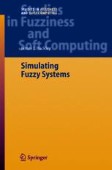Search
Search Results
-
On Quantization and Delay Effects in Nonlinear Control Systems
The purpose of this paper is to demonstrate that a unified study of quantization and delay effects in nonlinear control systems is possible by...
-
20 Human-Friendly Care Robot System for the Elderly
In this paper, “Do-u-mi”, a robotic care system is introduced (Do-u-mi means “helper” in Korean) (see Fig. 20.1). It is particularly aimed at the...
-
24 A Wrist Extension for MIT-MANUS
In 1991, a novel robot named MIT-MANUS was introduced as a test bed to study the potential of using robots to assist in and quantify the...
-
19 Electrically Assisted Walker with Supporter-Embedded Force-Sensing Device
An electrically assisted walking aid with a force-sensing device embedded in its supporting arm has been developed. The force sensor consists of a...
-
27 Great Expectations for Rehabilitation Mechatronics in the Coming Decade
This paper discusses the opportunities in the future for applications of mechatronics in rehabilitation. Trends in demographics, computer science and...
-
Prototype Based Recognition of Splice Sites
Splice site recognition is an important subproblem of de novo gene finding, splice junctions constituting the boundary between coding and non-coding...
-
Artificial Neural Networks for Reducing the Dimensionality of Gene Expression Data
The use of gene chips and microarrays for measuring gene expression is becoming widespread and is producing enormous amounts of data. With increasing...
-
Multimedia Medical Informatics System in Healthcare
In our modern 21st century, daily life would be unthinkable without computers. Multimedia and virtual reality are useful for people with spein...
-
Performance Evaluation for Model-Based Networked Control Systems
The performance of a class of Model-Based Networked Control System (MB-NCS) is considered in this paper. A MB-NCS uses an explicit model of the plant...
-
Beating the Bounds on Stabilizing Data Rates in Networked Systems
This paper applies simple, classical feedback control and quantization schemes to the problem of bit rate reduction for stabilizing unstable linear...
-
Anticipative and Non-anticipative Controller Design for Network Control Systems
We propose a numerical procedure to design a linear output-feedback controller for a remote linear plant in which the loop is closed through a...
-
8 Karhunen-Loève Expansion
In the following, second order stochastic processes are considered, i.e. random functions x(t) satisfying E{x(t)2}<∞,...
-
On Communication Requirements for Multi-agent Consensus Seeking
Several consensus protocols have been proposed in the literature and their convergence properties studied via a variety of methods. In all these...
-
Small-World Synchronized Computing Networks for Scalable Parallel Discrete-Event Simulations
We study the scalability of parallel discrete-event simulations for arbitrary short-range interacting systems with asynchronous dynamics. When the...
-
Stabilized Vegas
TCP Vegas was introduced in 1994 [5] as an alternative to TCP Reno. Unlike Reno (or its variants such as NewReno and SACK), that uses packet loss as...
-
Saturated Controller Design of an ABR Explicit Rate Algorithm for ATM Switches
The transmission of multimedia traffic on the broadband integrated service digital networks (B-ISDN) has created the need for new transport...
-
Global Stability of Nonlinear Congestion Control with Time-Delay
In recent years large strides have been taken in analytical approaches to network congestion control. These methods, originating in the academic...
-
Call Center Model
The queuing system in this chapter is shown in Fig. 10.1. This application was adopted from an example in [1].
-
Models and Methods for Analyzing Internet Congestion Control Algorithms
Congestion control in the Internet was introduced in the late 1980s by Van Jacobson [9]. Jacobson’s algorithm which is implemented in the transport...
-
Emergency Room Model
The system in this chapter was adapted from an example in [1]. The flow through the system is shown in Fig. 13.1. Patients arrive, according to the...
